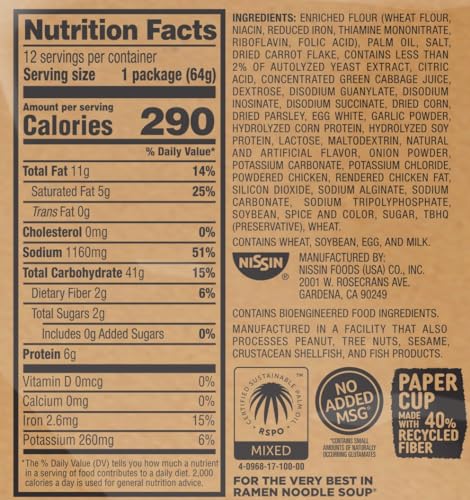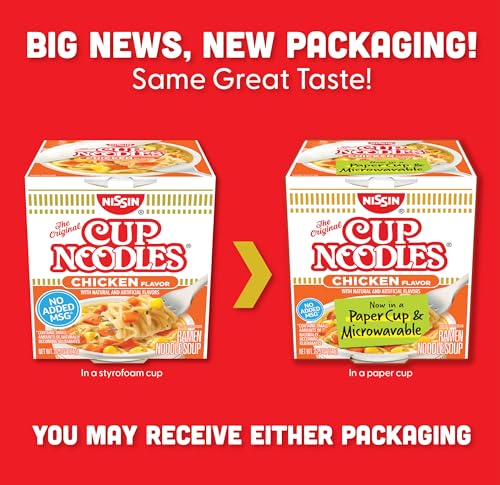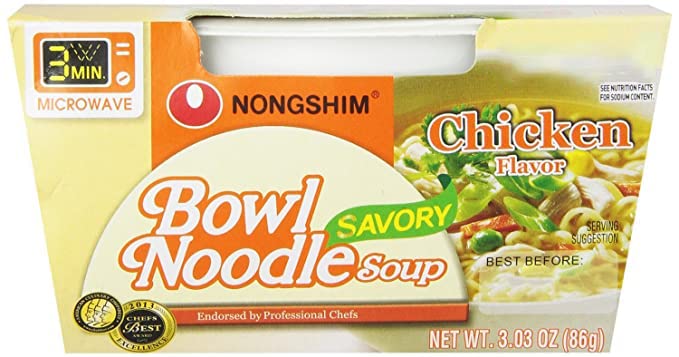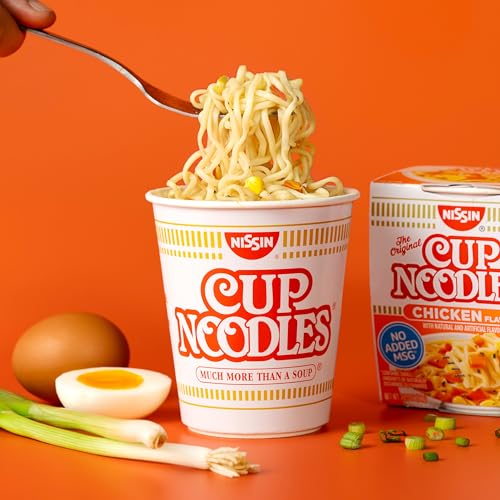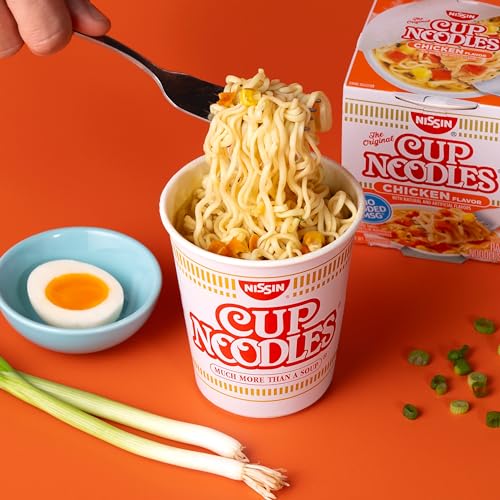Which instant ramen gives you the most protein for the least sugar — Nongshim or Nissin — and which one wins on taste and price-per-serving (plus a quick buying guide to help you choose)?
Quick primer: Nongshim’s microwaveable bowl and Nissin’s paper cup chicken ramen go head-to-head on PROTEIN, SUGAR, CALORIES, sodium, taste and convenience, and price per serving to help you pick the tastiest and most practical instant ramen for everyday meals today.
Premium Bowl
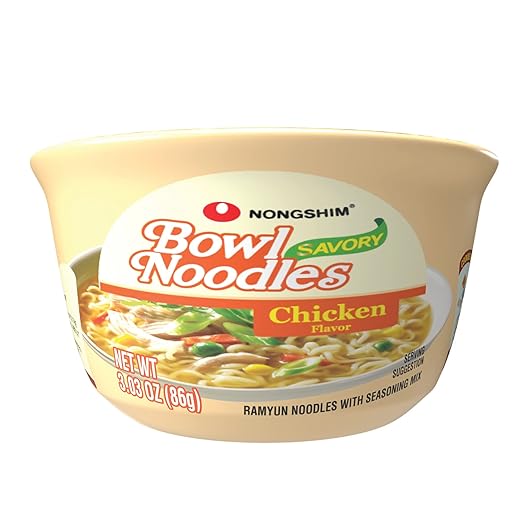
A heartier instant chicken noodle option that leans toward a premium, Korean-style savory broth and a convenient bowl format. Great when you want more vegetables and a fuller mouthfeel, but it costs a bit more per serving and can be sodium-forward.
Budget Cup
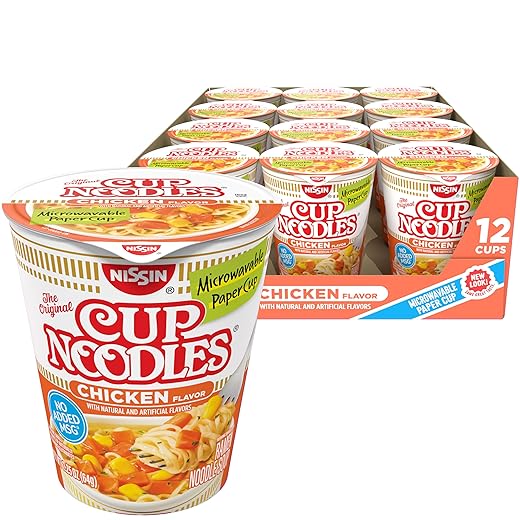
A classic, grab-and-go cup that nails convenience and value with decent chicken flavor and no added MSG. It’s great for quick snacks or lunches but is lighter on protein and ingredients compared with bowl-style ramen.
Nongshim Chicken Bowl
Nissin Chicken Cup
Nongshim Chicken Bowl
Nissin Chicken Cup
Nongshim Chicken Bowl
Nissin Chicken Cup
Nutrition Face-off: Protein, Sugar, Calories & Sodium
Why protein and low sugar matter
Protein helps you feel full longer and supports muscle repair; low added sugar keeps calories in check and reduces blood sugar spikes. Instant ramen trade-offs: convenient and comforting, but many varieties pack high sodium and modest protein — so portion size matters.
How to read the labels (quick)
Estimated side-by-side (per serving)
Nongshim Savory Chicken Noodle Bowl (12-pack) — estimated profile: higher-volume bowl, so expect more calories and protein per serving, and typically higher sodium than a cup product. Approximate ranges: 350–430 kcal, 8–12 g protein, 2–6 g sugars, 1,200–1,800 mg sodium. The bowl’s added veggies and larger noodle portion are why those numbers trend higher.
Nissin Cup Noodles Chicken (12-pack) — lighter single-serve cup, often reformulated with “reduced sodium.” Approximate ranges: 220–320 kcal, 6–8 g protein, 1–4 g sugars, 700–1,200 mg sodium. Smaller portion = fewer calories and slightly less protein, but also less filling unless you bulk it up.
Quick tips: boost protein, cut sodium
Side-by-Side Feature Comparison
Taste & Texture: Broth, Noodles and Real-World Flavor
Broth & seasoning: savory vs familiar
Nongshim leans into a richer, Korean-style chicken broth — deeper umami, a noticeable savory oil, and real veggie pieces (cabbage, carrots, bok choy, mushrooms) that add texture and flavor as they rehydrate.
Nissin Cup Noodles delivers the classic American chicken-cup profile: lighter, broth-forward, and more one-note salty-savory comfort. Veggie bits are smaller and mainly decorative, and the seasoning is designed for instant gratification rather than complexity.
Noodles & mouthfeel
Nongshim uses thicker, ramyun-style noodles with a springier chew — they stay pleasantly bouncy in hot broth and feel more substantial as a meal. Nissin’s noodles are thinner, softer, and quicker to hydrate; they’re ideal for fast snacking but lack the toothsome bite of ramyun.
Hot bowl vs quick snack
Both shine hot, but Nongshim feels more like a sit-down bowl (fills up and warms you longer). Nissin is perfect for a fast, light fix — ready in minutes and portable. Leftovers: Nongshim holds up better; Nissin can get mushy if over-steeped.
Common user impressions
Tasting checklist
Convenience & Prep: Microwave Bowl vs Paper Cup
Prep steps & cook time
Nongshim (microwaveable bowl)
Microwave safety & container notes
Cleanup, storage, and waste
Best fit: office, dorm, travel
Safety tips: always vent lids, use mitts, avoid microwaving unlabeled paper cups, and let soups stand briefly before handling.
Price Per Serving & Value: Which One’s the Better Deal?
Raw cost per serving
Factor in shipping, Prime & shelf life
If you have Amazon Prime, shipping is usually free — so those per-serving numbers hold. Without Prime, a $4–6 shipping fee adds roughly $0.33–$0.50 per serving on a 12-pack, which narrows the gap. Both products are shelf-stable for many months (check package dates), so bulk buying rarely wastes food unless you don’t eat instant ramen often.
Value beyond sticker price
Don’t just compare dollars. Use “protein per dollar” as a quick metric: check grams of protein on the label and divide by cost per serving to see which feeds you more efficiently. Also weigh:
Which to pick — quick scenarios
Buying guide: if price is king, go Nissin; if satiety, flavor, and convenience matter more, spend the extra for Nongshim. Check labels for exact protein and sodium to match your priorities.
Final Verdict & Buying Guide
Nongshim wins for flavor and a richer bowl experience — more vegetables and fuller taste — so pick it if taste and a heartier meal matter. Nissin Cup Noodles is the clear choice for maximum portability, lower price per serving, and fastest, lowest-effort prep. For protein seekers neither is a high-protein meal; add egg, chicken, or tofu to boost protein and lower sodium impact.
Quick checklist: check protein and sodium on the label, note sugar (low), add fresh protein, and choose format that fits your routine (bowl=richer, cup=portable). Ready to upgrade your ramen today?







